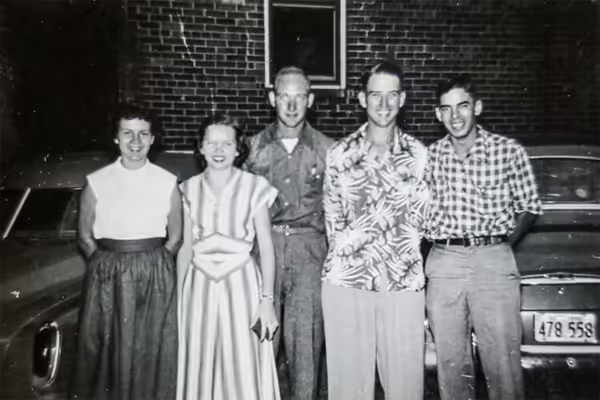
URBANA, Ill. — For Beatrice H. Bagby, known to most as Bea, 4-H wasn’t just a club. It was a lifeline. A spark. A community. And ultimately, a calling.
Bea found Illinois 4-H in the wake of unimaginable grief. In May 1946, her mother passed away. Bea was just 12 years old.
“The day after her funeral, I returned to school — and so began the rotation of caregivers hired to restore some sense of ‘normal’ to my life,” Bea recalled. “But it wasn’t sustainable. My father couldn’t afford the help. My older brother and I tried to fill in the gaps, even though we didn’t know what we were doing. We were grieving and growing up all at the same time.”
Less than a year later, in 1947, Bea told her father they didn’t need to hire anyone else — she could do just as well. And they did. “We took over for ourselves,” she said.
And in the midst of rebuilding a new family rhythm, she discovered 4-H.
“At some point in 1947, I found 4-H — though I don’t remember how,” Bea said. “That summer, I gave a food demonstration at the McDonough County fair. As I was getting ready, another girl’s mother asked me if I needed anything, and I told her that I had forgotten an egg. She dashed out of the tent, returning from the chicken tent with the freshest of eggs just in time!”
It was the beginning of a seven-year 4-H journey in Mrs. Paul Hentges’ 4-H Club in Macomb that would shape the course of Bea’s life.
“I loved 4-H: the friends I made throughout the county and state, the unexpected experiences that I had, the things I learned, and how it broadened my life horizons. My future education and career were influenced by those early years in 4-H,” Bea added.
Illinois 4-H is the youth development program of the University of Illinois Extension, part of the College of Agricultural, Consumer and Environmental Sciences at the University of Illinois Urbana-Champaign.
Finding Purpose Among the Pines at 4-H Memorial Camp
In 1951, Bea attended the second Illinois State 4-H Junior Leadership Conference at 4-H Memorial Camp in Monticello. That week made a lasting impression — from the leadership lessons to the quiet dignity of the evensong ceremony, held at dusk from inside the Allerton House.
“I remember looking out the second-story windows and before us lay the rolling prairie land, edged on each side with the Illinois forest trees, and in the distance, the darkening sky,” Bea said. “A single line of 4-H campers exited from the trees and proceeded across the prairie grass, breaking into four lines and then they all sat down…so quiet…and then our 30 minute program of music and speaking…and then they walked out the same way…so quiet…what a special evensong, appreciating each other and our world and our opportunities to grow and serve.”
Over the years, Bea returned to Memorial Camp many times — as a 4-H member, Illinois Extension employee, mentor, conference organizer, and donor.
Among many memorable 4-H Memorial Camp mainstays, one person — Richard Lyon — stands apart for Bea: “He, as State 4-H Leader, went against everyone else’s advice who had told him, ‘She’s married and has four sons — she’ll never move to Champaign,’ and decided, that’s for her to decide and called me anyway in 1970, offering me the opportunity to interview to become a member of the state 4-H staff.”
Read the full story from the College of ACES.
Photo: 1951 4-H Junior Leadership Conference participants Pat McClure, Beatrice Hill (now Bagby), Bene Windsor, Joe Smith, Eldon Dilworth
University of Illinois Extension develops educational programs, extends knowledge, and builds partnerships to support people, communities, and their environments as part of the state's land-grant institution. Extension serves as the leading public outreach effort for University of Illinois Urbana-Champaign and the College of Agricultural, Consumer and Environmental Sciences in all 102 Illinois counties through a network of 27 multi-county units and over 700 staff statewide. Extension’s mission is responsive to eight strategic priorities — community, economy, environment, food and agriculture, health, partnerships, technology and discovery, and workforce excellence — that are served through six program areas — 4-H youth development, agriculture and agribusiness, community and economic development, family and consumer science, integrated health disparities, and natural resources, environment, and energy.